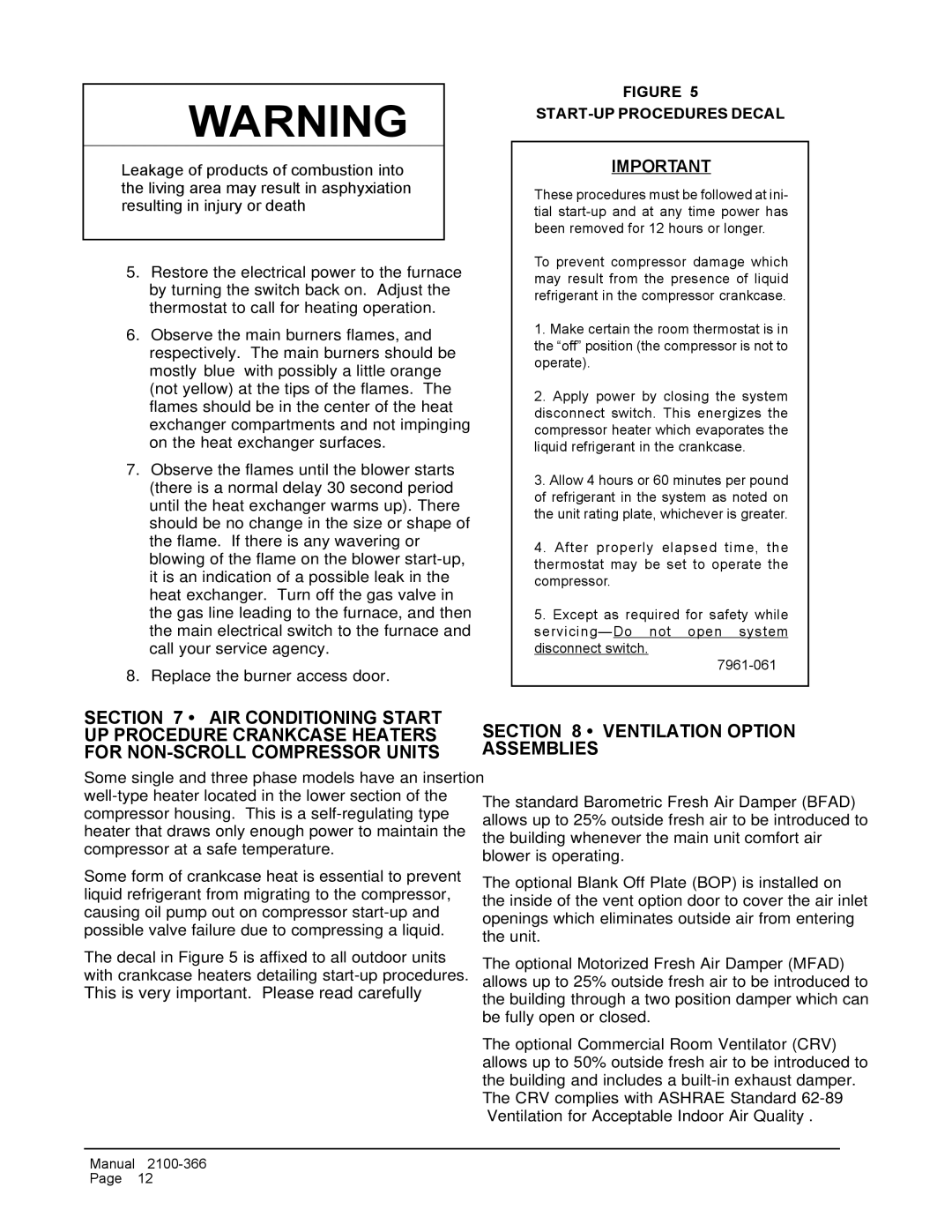WG-Series specifications
The Bard WG-Series is a notable range of water-source heat pump units, designed to provide efficient heating and cooling solutions tailored to residential and commercial applications. This series stands out for its compact design, energy efficiency, and innovative features that cater to modern demands for sustainability and reliability.One of the primary characteristics of the Bard WG-Series is its use of advanced heat pump technology. These units harness the energy from water sources, whether it be ponds, lakes, or groundwater, which allows them to operate efficiently year-round. This sustainable approach reduces reliance on traditional fossil fuels, making it a favored choice for environmentally conscious users seeking to lower their carbon footprint.
Key features of the Bard WG-Series include its high-efficiency scroll compressors which enhance the unit's performance by optimizing energy consumption. This technology not only supports efficient heating and cooling cycles but also contributes to quieter operation compared to conventional systems, ensuring comfort within the living or working environment.
Another important aspect of the Bard WG-Series is its ability to provide both heating and cooling in one compact unit. This dual functionality minimizes the need for separate systems, streamlining installation and maintenance processes while also reducing overall system costs. The units are designed with user-friendly interfaces that allow for easy monitoring and management of system performance.
The build quality of the Bard WG-Series is commendable, featuring durable, corrosion-resistant materials that ensure longevity and reliability in various environmental conditions. Enhanced insulation within the units helps maintain temperature consistency, further increasing energy efficiency and comfort levels.
Additionally, Bard has incorporated advanced controls and automation features in the WG-Series that allow users to remotely manage their heating and cooling needs. Integration with smart home systems is possible, providing users with greater convenience and control over their HVAC systems.
Overall, the Bard WG-Series represents a significant advancement in heat pump technology, marrying efficiency with sustainability. Its innovative features cater to contemporary energy demands, making it an excellent choice for those seeking reliable, eco-friendly building solutions. With its combination of performance, user-friendliness, and durability, the Bard WG-Series is poised to meet the heating and cooling needs of a diverse range of applications.

